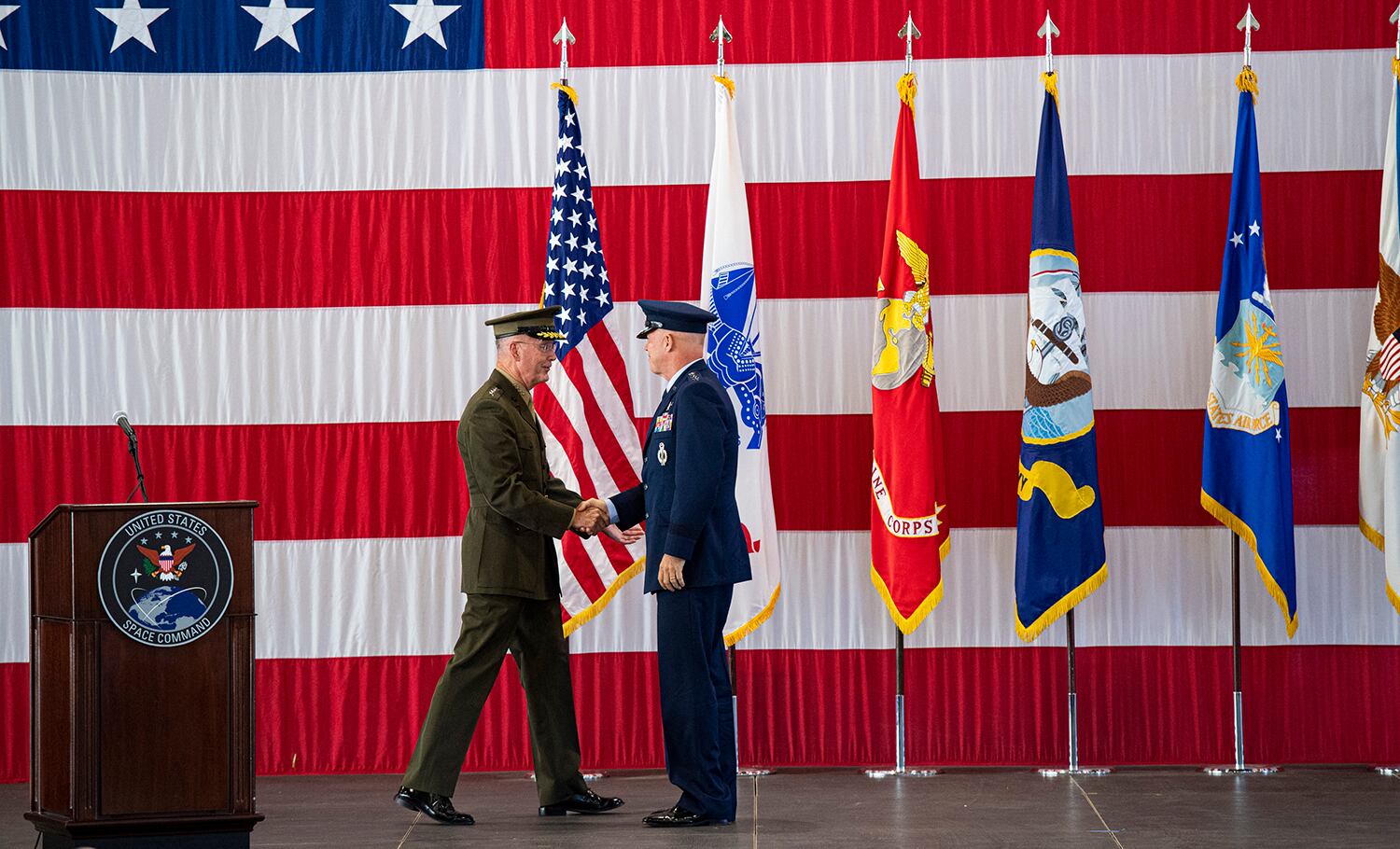U.S. Space Command is expected grow by 25 percent in the next two months as the military’s newest combatant command comes into its own, the head of the new organization said at a Center for Strategic and International Studies event Nov. 18.
It’s been less than three months since U.S. Space Command was reestablished as the United States’ eleventh combatant command at a Rose Garden Ceremony Aug. 29. Now, the organization has taken over responsibility for fighting any potential battle in space from U.S. Strategic Command.

Over the next couple of months, U.S. Space Command is set to grow by 25 percent. Today, the command is made up of about 400 people at headquarters, which Gen. Jay Raymond, the head of the command, expects to increase to about 500 staffers at the beginning of next year.
U.S. Space Command wasn’t stood up overnight. Raymond, who serves as head of U.S. Space Command and Air Force Space Command, first heard rumblings the Department of Defense was considering a combatant command for space a full year before that picture perfect ceremony at the White House.
He started planning immediately. Along with five others, Raymond flew to San Antonio, Texas, locked everyone in a room and said, “Okay, we have to plan this command.” By the end of that week the team had the blueprints for what would eventually become U.S. Space Command.
“It’s fascinating for me to be given the opportunity to … plan that command and then stand it up and then to get it going and lead —it’s the highlight of my career,” recalled Raymond. “And it started with those five.”
Now, Raymond is focusing on how the new organization can grow in the near term and where it will focus.
The highest priority, he said, is planning. Specifically, joint planning with other combatant commands. Raymond said his command is building integrated planning elements to embed with other commands. Lead staffers have already been hired and the command is preparing to establish the first teams at U.S. European Command, U.S. Indo-Pacific Command and U.S. Strategic Command.
In public comments in recent months, Raymond has repeatedly said he is looking forward to having more say in requirements for space systems as the head of U.S. Space Command than at Air Force Space Command. Raymond added he is working on building a requirements team.
Another area that needs to be built largely from scratch is the command’s intelligence function.
“Maybe one of the most important things that we do early on is to rebuild that intelligence function, that atrophied once the U.S. Space Command that stood down in 2002 went away,” said Raymond.
RELATED

Raymond went on to note that U.S. Space Command has already built a solid relationship with the intelligence community that has already produced some results.
“Our relationship with the intelligence community has never been better. The relationship between us and the (National Reconnaissance Office) is at an all time high. We have a shared strategy, a shared concept of operation. We man a C2 center called the National Space Defense Center,” said Raymond. “We’ve made some really, really, really significant gains based on the data sharing that we’re able to do based on having situational awareness tools.”
And as the command grows, Raymond said his team is close to completing U.S. Space Command’s campaign for space, which he said will be ready at the beginning of next year.
All of this, he said, is quite a ways from five people locked in a room in San Antonio.
“It’s pretty unprecedented if you look at doing all this in one year, from planning to standing up in a year is a pretty heroic lift,” said Raymond.
Nathan Strout covers space, unmanned and intelligence systems for C4ISRNET.








